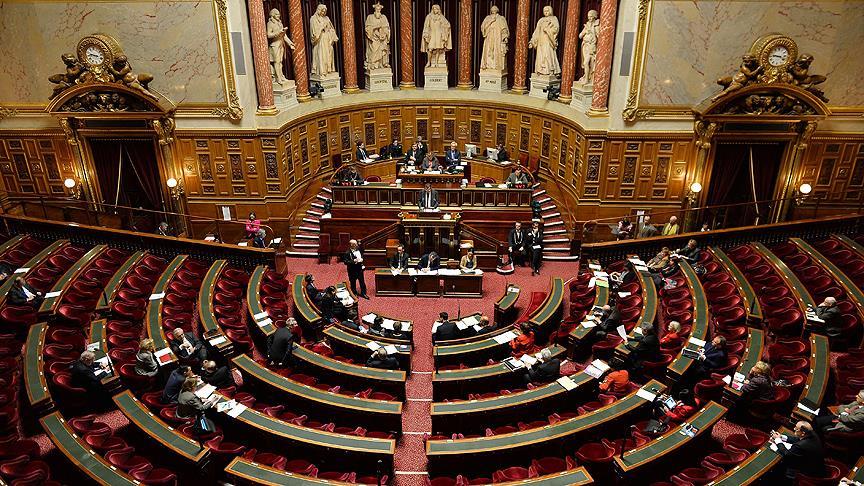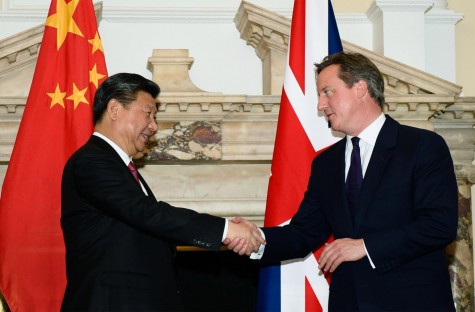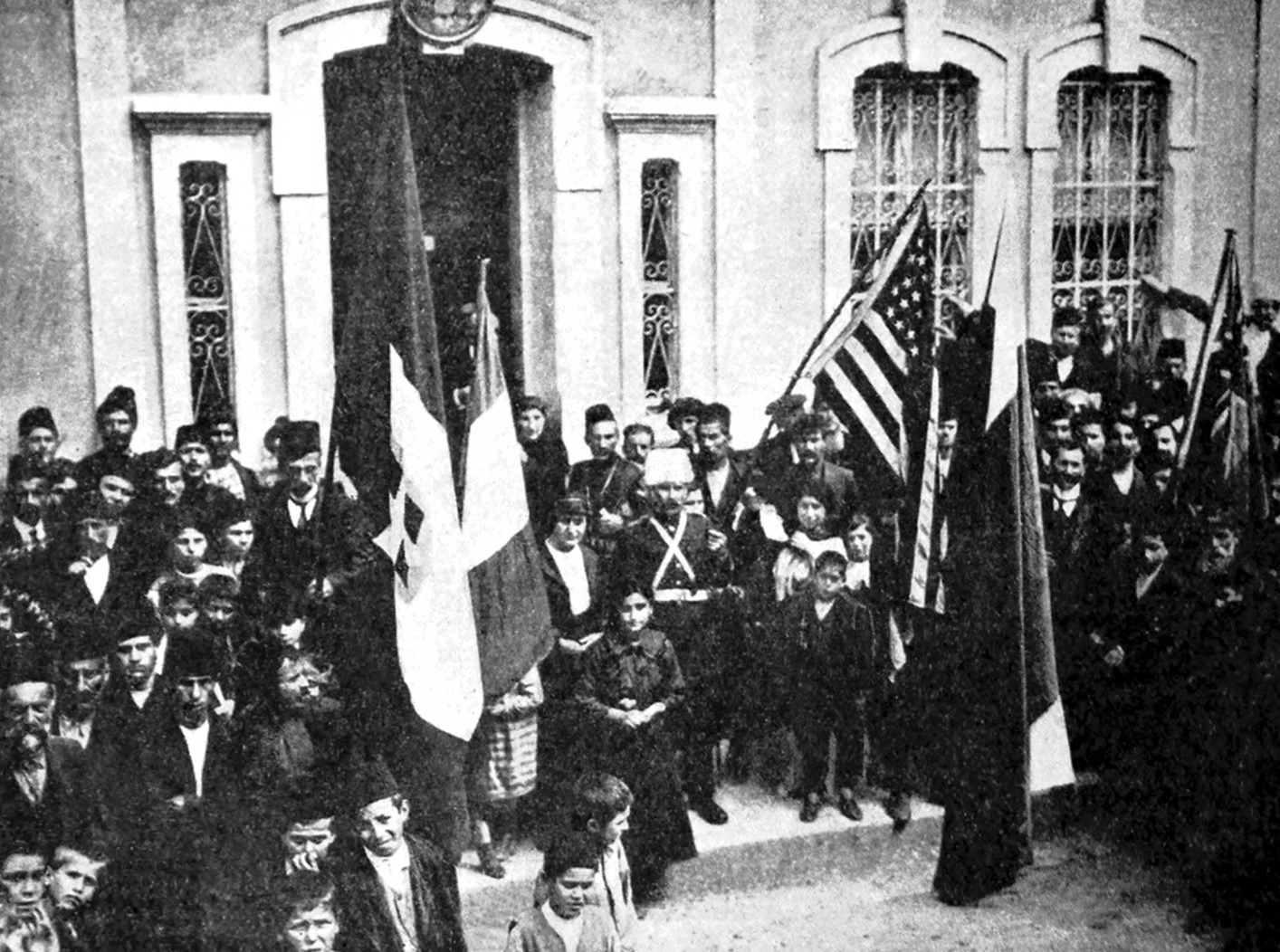
Sasun: The History of an 1890s Armenian Revolt
Justin McCarthy-Ömer Turan-Cemalettin Taşkıran
Salt Lake City: The University of Utah Press, 2014, 351 pages
ISBN: 978-1-60781-384-2
Language: English
Amazon.com price (hardcover) $32.00 (07.04.2015).
Sasun: The History of an 1890s Armenian Revolt by Justin McCarthy[1], Ömer Turan[2] and Cemalettin Taşkıran[3] is a book that aims to shed light on the Armenian revolt of 1894 in Sasun in Southeastern Turkey. The authors analyze the events that took place in Sasun in their socio-political context and the historical background. At the same time, the authors critically evaluate the reporting on the ‘Sasun Massacres’ in Europe and the United States and investigate the reliability of these reports.
The main argument of the book is that events in Sasun were represented falsely in the USA and Europe. Authors argue that reports of the journalists, missionaries, or diplomats were inaccurate and the stories of ‘Ottoman oppression and massacre’ circulated in the media were far from reflecting the truth. In order to substantiate their argument, authors analyze the actual testimony given in the Sasun Commision established following the events in Sasun and the report of the European delegation which attended the commission meetings. Sasun: The History of an 1890s Armenian Revolt is a valuable study of reliable archival documents that invalidates some of the hegemonic myths that surround Sasun.
In order to contextualize the Sasun revolt, the authors first give brief information on the climate, landscape and the population of the region. They underline that the region was remote and inaccessible due to lack of roads and its mountainous landscape. They also add that it was difficult to travel to the region most of the year due to snowfall. Thus, the authors demonstrate that the Armenians and the Kurds were virtually independent from the central government and imply that there was minimal state authority in the region.[4] Stating that the officials could not penetrate into Sasun, authors explain that finding exact information on the demographic structure of the region is not possible. Yet, they estimate that the Armenian population of the affected region was between 3,500 and 4,500.
In order to provide a better understanding of the Sasun Revolt, instead of focusing on the Ottoman intervention in Sasun, the authors provide information about the relations between different groups (Kurds and Armenians) in the region prior to the revolt.
Contrary to the reports in the western press that presented the Kurds as an unified group fighting Armenians, the authors state that there were tribal divisions and conflicts among the Kurds and that Armenians were allying themselves with different Kurdish tribes. They indicate that conflicts among the groups were mainly due to territorial disputes and disagreements based on pasture farming. They state that the Ottoman government initially took the side of the Armenians in their conflicts with the Kurds. The authors comment that reason behind it was most likely to assert authority in the region since Kurdish tribes were more independent and accepted no authority. The Kurds also had caused major revolts in the past. The authors speculate that the government was also aware that Armenian casualties would adversely affect relations between the Ottomans and the Europeans. Therefore, each year the government was sending troops to protect Armenians.[5]
On the other side, the authors argue that it was not conflicts among Kurds and Armenians that led to the Ottoman intervention in Sasun; it was the rebel actions against the Ottoman authority. The refusal to pay taxes, expulsion of officials from the region, killing of gendarmes and attacks on Ottoman officials were indications that the Armenians were in active revolt against the government.[6]
The authors underline that the Hunchaks[7] were the masterminds behind Sasun revolt: it was the Hunchaks who propagated the idea of revolution. Their plan was to attack Turks and Kurds, causing retaliations. Subsequently, only the Christian (Armenian) casualties would be reported in the European press, instigating an anti-Turkish sentiment in Europe that would eventually result in a European intervention leading to independent Armenia.[8] To this end, the authors state that the Hunchak agents deceived people by making false promises of weapons and outside assistance. As the plan to bring European intervention failed, the authors conclude that Armenians were sacrificed as expendable pawns. They claim that even if the Europeans had intervened, it would have been far too late to aid the Sasun rebels.[9]
The book provides many examples of reports on the Sasun events in the Western Press. In general, the authors point out that reports only focused on Armenian deaths and did not mention Kurdish or Turkish casualties. The press reported exaggerated numbers of Armenian casualties (unrealistic numbers varying from 3,000 up to 10,000 and sometimes even more) and gave detailed depictions of gruesome tortures, massacres and pillages of Armenian villages by Turkish troops. Some reports provided explanations for supposed Turkish actions, such as unjustified fear of Armenian rebellion, envy of Armenian success, bloodlust of Muslims (Kurds and Turks) who hated Christians (Armenians). However there was one thing in common in all of them: Turks had killed great number of Armenians without mercy and without real justification.[10]
In the book, it is also mentioned that the Ottoman government imposed censorship on the reports on Sasun events and forbid the entry of the reporters in the region.[11] The authors rightly underline that by denying access to the region, the Ottoman government set the stage for the appearance of fabricated reports. Additionally, this censorship gave the Western press another pretext to blame the Ottoman government: they reported that the Ottoman authorities were hiding the truths. Had the reporters been on the scene, the authors argue, they might at least have made rather more accurate reports, no matter their intentions.
The authors draw attention to an interesting and important fact: the sources of various newspaper articles were not identifiable.[12] Articles did not cite their sources and just used phrases such as “one account speaks of”, “letter from various parts of Asia Minor”, “an Armenian Correspondent”, “private reports received” etc. This kind of reporting arouses suspicion on the validity of the reports.
Furthermore, the authors indicate that sources of the press were not impartial either. Obviously, Hunchaks and their sympathizers were one of the sources responsible for promulgating stories of Ottoman cruelty. Another popular source for the press in Britain was the Armenian Patriotic Association and the Anglo-Armenian Association. These two Armenophile organizations had close ties with prominent British politicians and were instrumental in disseminating descriptions of so-called Turkish brutality. American Missionaries were also major publicists for the Armenian cause. The authors state that these missionaries had an immense dislike of Islam and therefore were prejudiced prior to coming to Ottoman Empire. These missionaries had close relations with the Armenians and reported everything that was provided by Armenians without questioning their validity.[13]
Sasun: The History of an 1890s Armenian Revolt also mention reports of foreign diplomats in the Ottoman Empire on the Sasun events. In that period, British governments had no sympathy for the Ottoman Empire and were headed by Prime Ministers such as William Ewart Gladstone – a known ‘anti-Turk’. [14] The authors state that most British diplomats shared the views of their superiors. This was also the case for most of the diplomats of other Western countries. Their sources were mainly Armenians and the missionaries and therefore, sent reports similar unjustifiable reports.
The authors cite the letters of the American ambassador in Turkey, Alexander W. Terrell, who had a different approach and a more accurate analysis on the Sasun events. Terrell, in his letters, wrote that he doubted the credibility of the press reports. He wrote that it was the Armenian rebels who had incited troubles. He denied any Ottoman hatred of Christians or Armenians since there were many Armenians in service to the Ottoman government and administration, and indicated that the sympathy of England, Russia and France for the Armenians was because of their territorial desires. Terrell questioned whether the conditions of the Irish or the Russian peasant were better than the Ottoman Armenians and added that the Ottoman Empire was tolerant to other religions. He expressed his opinion that all the reports of massacre had been prepared by Armenians for political purposes.[15] As a natural consequence of the anti-Turkish environment, Terrell was criticized by the missionaries and the American press and his opinions were mainly ignored.
Then the book passes on to the Sasun Commission which was established following the revolt to investigate the incidents in Sasun. The authors state that the Ottoman government, under pressure of the European countries, had offered to send commission of inquiry to Sasun. However, this proposal was opposed as the Europeans believed that a purely Ottoman commission would not be satisfactory and would deliberately falsify its findings. After negotiations, it was decided to send a commission of inquiry consisting of Ottoman officials and an independent European delegation of British, French and Russian diplomats that will be present at the commission hearings.[16]
Analyzing the report filed by the European delegates following the proceedings, the authors indicate that the delegates’ intention was to construct a narrative against the Turks and the Kurds by selecting evidence from Armenians without taking Turkish and Kurdish testimony into account. Although more temperate compared to missionary and press reports, the Delegates’ Report was still unreliable. The delegates falsified and neglected some evidence that would have disproven their claims, and misrepresented the statements of those who opposed their version of events. One important fact that the authors mention is that despite all their efforts to incriminate the Turks, the delegates could not find evidence of massacre of thousands of Armenians; they were able to report only 277 people dead.[17]
Ultimately, these reports were successful to create a negative image on Muslims, more precisely the Turks. Indeed, as mentioned by the authors, the Sasun events drew condemnation from the West. There were calls for drastic action to save the ‘Christian Armenians’ and punish the Turks. Some proposed to force the Ottoman Empire to make reforms in favor of the Armenians. There were demands for European intervention or to force the dissolution of the Empire. Armenophile organizations and churches in Great Britain and the United States conducted smear campaigns against Turks in every possible way. However, the end goal of an independent state through European intervention was never achieved.
Throughout the book, the authors refute the one-sided reports on Sasun by providing counter-arguments based on the actual minutes of the Sasun Commission, which are eventually the only reliable sources on the events in Sasun. Unlike the one-sided reporting of the European Delegation, the authors consider all testimony given to the commission by the Turks, Armenians and Kurds, and provide evidence countering European and Armenian allegations of a massacre in Sasun. The authors also make well founded judgments regarding the motives behind these false reporting. In addition to all these, the authors reveal several reporting errors and irrationalities which also put the validity of these reports in question.
The common narrative of the ‘Ottoman oppression of the Christians (Armenians)’ is still prevalent to this day. Moreover, unreliable reports of the missionaries and the Western press are accepted as a historical fact by many popular writers and even historians and are quoted in countless books. Furthermore, these reports could be also considered as the roots of the Armenian ‘Genocide’ narrative. For this reason, Sasun: The History of an 1890s Armenian Revolt is a valuable study as it refutes false information in these reports by providing concrete and logical arguments. The book is also valuable as it shows the beginnings of a campaign and narrative which is currently on the front burner more than ever.
[1] Prof. Dr. Justin McCarthy is a professor of history at the University of Louisville. He is an expert of the Ottoman Empire, modern Turkey and the Middle East. He is the author of numerous books.
[2] Prof. Dr. Ömer Turan is a professor of history at the Middle East Technical University. He is the author of The Turks in Bulgaria, 1878–1908 and Avrasya’da Misyonerler (Missionaries in Eurasia).
[3] Prof. Dr. Cemalettin Taşkıran is a professor of history at Gazi University. He has published numerous articles on Turkish history and international relations. He is also the author of several books on Turkish and Ottoman history.
[4] Justin McCarthy, Ömer Turan, Cemalettin Taşkıran, Sasun: The History of an 1890s Armenian Revolt, The University of Utah Press, Salt Lake City, 2014, p.10.
[5] Ibid, p.15.
[6] Ibid, p.26.
[7] The Hunchakian Revolutionary Party was founded in Geneva, Switzerland, in 1887 by Armenian students from the Russian Empire. The party’s goal was to establish an independent Armenia through a revolution that is to be achieved by means of propaganda, agitation and terror.
[8] The authors state that this plan was inspired by the revolts in Bulgaria in 1876. They indicate that Bulgarian rebels had begun their revolt by killing Muslim villagers. Only the deaths of Bulgarian Christians were reported in the European press causing an anti-Turkish feeling that led to a Russian intervention. The result was a new Bulgarian state.
[9] Ibid, p.23.
[10] Ibid, p.70.
[11] Ibid, p.49.
[12] Ibid, p.43.
[13] American Board of Commissioners for Foreign Mission in Boston served as intermediaries in publicizing information provided by missionaries.
[14] William Ewart Gladston (1809-1898), who served four times as prime minister of Britain, in his famous pamphlet, The Bulgarian Horrors and the Question of the East, wrote: “Let me endeavor, very briefly to sketch, in the rudest outline what the Turkish race was and what it is. It is not a question of Mohammedanism simply, but of Mohammedanism compounded with the peculiar character of a race. They are not the mild Mohammedans of India, nor the chivalrous Saladins of Syria, nor the cultured Moors of Spain. They were, upon the whole, from the black day when they first entered Europe, the one great anti-human specimen of humanity....” While receiving the Anglo-Armenian Association, he also gave a speech calling the Turks “the scourge of the world”, “a disgrace to civilization” and “a curse to mankind”.
[15] Ibid, p.114.
[16] Ibid, p.116.
[17] Ibid, p.151.
© 2009-2025 Center for Eurasian Studies (AVİM) All Rights Reserved
No comments yet.
-
 CHINA’S RISING PROFILE IN THE PACIFIC
CHINA’S RISING PROFILE IN THE PACIFIC
Ali Murat TAŞKENT 26.01.2017 -
 CONTRADICTIONS REVEALED WITH THE DEBATES ON SREBRENICA IN THE UN
CONTRADICTIONS REVEALED WITH THE DEBATES ON SREBRENICA IN THE UN
Ali Murat TAŞKENT 12.07.2015 -
 FRANCE ADAMANT IN COUNTERING TURKEY
FRANCE ADAMANT IN COUNTERING TURKEY
Ali Murat TAŞKENT 25.10.2016 -
 THE “GOLDEN ERA” OF CHINA-UK RELATIONS
THE “GOLDEN ERA” OF CHINA-UK RELATIONS
Ali Murat TAŞKENT 02.11.2015 -
 GERMANY AT THE FOREFRONT OF ANTI-TURKISM
GERMANY AT THE FOREFRONT OF ANTI-TURKISM
Ali Murat TAŞKENT 24.06.2015
-
THE PROTOCOLS SIGNED WITH ARMENIA
Alev KILIÇ 21.10.2012 -
 19 MAY AND PONTUS STORIES
19 MAY AND PONTUS STORIES
Teoman Ertuğrul TULUN 20.05.2019 -
COOPERATION AT THE WIDER BLACK SEA BASIN AND CHANGING TIMES
Alev KILIÇ 26.05.2013 -
IS IT REALLY A SUCCESS?
Ömer Engin LÜTEM 05.03.2010 -
THE RUSSIAN MILITARY BASE IN ARMENIA (1)
Ömer Engin LÜTEM 23.08.2010
-
25.01.2016
THE ARMENIAN QUESTION - BASIC KNOWLEDGE AND DOCUMENTATION -
12.06.2024
THE TRUTH WILL OUT -
27.03.2023
RADİKAL ERMENİ UNSURLARCA GERÇEKLEŞTİRİLEN MEZALİMLER VE VANDALİZM -
17.03.2023
PATRIOTISM PERVERTED -
23.02.2023
MEN ARE LIKE THAT -
03.02.2023
BAKÜ-TİFLİS-CEYHAN BORU HATTININ YAŞANAN TARİHİ -
16.12.2022
INTERNATIONAL SCHOLARS ON THE EVENTS OF 1915 -
07.12.2022
FAKE PHOTOS AND THE ARMENIAN PROPAGANDA -
07.12.2022
ERMENİ PROPAGANDASI VE SAHTE RESİMLER -
01.01.2022
A Letter From Japan - Strategically Mum: The Silence of the Armenians -
01.01.2022
Japonya'dan Bir Mektup - Stratejik Suskunluk: Ermenilerin Sessizliği -
03.06.2020
Anastas Mikoyan: Confessions of an Armenian Bolshevik -
08.04.2020
Sovyet Sonrası Ukrayna’da Devlet, Toplum ve Siyaset - Değişen Dinamikler, Dönüşen Kimlikler -
12.06.2018
Ermeni Sorunuyla İlgili İngiliz Belgeleri (1912-1923) - British Documents on Armenian Question (1912-1923) -
02.12.2016
Turkish-Russian Academics: A Historical Study on the Caucasus -
01.07.2016
Gürcistan'daki Müslüman Topluluklar: Azınlık Hakları, Kimlik, Siyaset -
10.03.2016
Armenian Diaspora: Diaspora, State and the Imagination of the Republic of Armenia -
24.01.2016
ERMENİ SORUNU - TEMEL BİLGİ VE BELGELER (2. BASKI)
-
AVİM Conference Hall 24.01.2023
CONFERENCE TITLED “HUNGARY’S PERSPECTIVES ON THE TURKIC WORLD"









